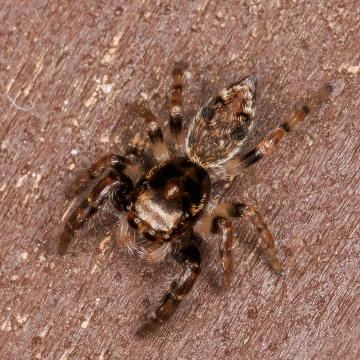Species Account for Macaroeris nidicolens
Macaroeris nidicolens (Walckenaer, 1802)
Araneae: Salticidae

Reproduction for study and non-profit use permitted, all other rights reserved.
Taxonomic group: spiders (Araneae) - County data
View time series maps for Macaroeris nidicolens
member log-on for taxon report
Images
upload a new image
National map for Macaroeris nidicolens on Spider and Harvestman Recording Scheme website
Essex Red Data List comment
Recorded from 2 out of 57x10km.sq. records in county
Species text
This jumping spider was first recorded in Britain in 2002 on pines in Mile End Park in Middlesex (Milner, 2002) and subsequently found in in 2004 Brooklands, Surrey also on pines, by Jonty Denton. In Europe the species occurs mainly in southern and central Europe, but occurs as far north as Belgium. In 2006 two males, one female and several juveniles were found on gorse bushes at a site in West Thurrock, the third British record and the first in Essex. Although it was originally thought most likely that the spider had been imported with pines into the Mile End Park site, it now seems more likely that the spider has naturally colonised Britain from Europe and is in the process of spreading into sites that provide hot conditions. In 2007 a further record was made at a site about 2km to the north. References
Habitats
Recorded management for locations with Macaroeris nidicolens
Recorded substrate and hydrology for locations with Macaroeris nidicolens
Why not join the Club, register and add a new species page
Interpretation of distribution maps




















